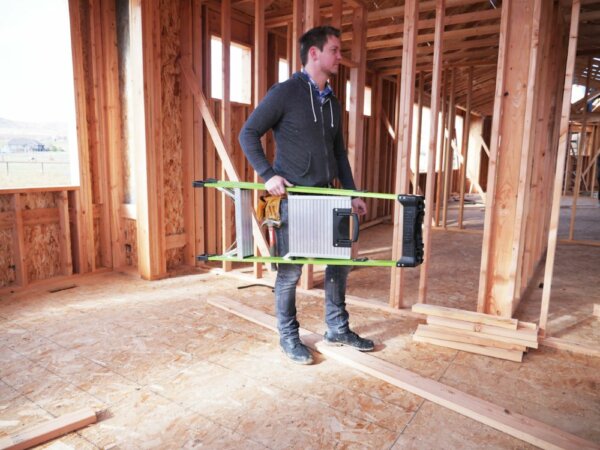In this Article
Introduction
Stepladders are a staple in both home and professional settings, offering a convenient solution for reaching heights. However, their use comes with safety considerations that are often overlooked. This post will guide you through essential safety tips and best practices for using stepladders, ensuring you can complete your tasks efficiently and, most importantly, safely.
1. Selecting the Right Stepladder
- Understanding Weight Ratings: Always choose a stepladder with a suitable duty rating for your weight plus any tools or materials you’ll carry. Overloading a stepladder can lead to accidents.
- Material Matters: Aluminium stepladders are lightweight and ideal for most home uses. For electrical work, however, opt for fibreglass or glassfibre ladders due to their non-conductive properties.
- EN131 Standard: For commercial environments, select stepladders that meet the EN131 standard, ensuring they have passed rigorous safety tests.
2. Ensuring Stability and Balance
- Proper Positioning: Set up your stepladder on a level, stable surface. Avoid slippery, uneven, or soft grounds.
- Fully Open the Ladder: Ensure the stepladder is fully opened with all locks securely engaged.
- Avoid Overreaching: Keep your body centered between the side rails. Overreaching can cause the ladder to tip over.
3. Safe Climbing Practices
- Three Points of Contact: Maintain three points of contact (two hands and one foot or two feet and one hand) at all times when climbing or working on the stepladder.
- Face the Ladder: Always face the ladder while climbing or descending. This positioning allows for better balance and control.
4. Positioning the Stepladder
- Away from Doors: Never place a stepladder near doors that can be opened towards it. If unavoidable, ensure the door is locked or guarded.
- Appropriate Height: Do not climb the top step or cap of the stepladder unless it is designed for that purpose.
5. Maintenance and Care
- Regular Inspections: Before each use, inspect your stepladder for any signs of damage, such as bent rails or loose steps.
- Proper Storage: Store your stepladder in a dry, secure place to prevent wear and rust.
Conclusion
While stepladders are incredibly useful, their safety largely depends on how they are used. By following these guidelines, you can significantly reduce the risk of accidents. Remember, taking a few extra moments to ensure proper setup and use can make all the difference in safety.
For a safe and efficient experience with stepladders, explore our range at 174PPE & Site Supplies. We offer a variety of stepladders, all adhering to the highest safety standards, to suit your every need.
Shop Stepladders
Werner Megastep Stepladders
Ex VAT£318.08Inc VAT£381.70
Werner Stepladder High Handrail
Ex VAT£32.40Inc VAT£38.88
Werner Fibreglass Stepladders
Ex VAT£111.76Inc VAT£134.11
Werner Fibreglass Platform Stepladders
Ex VAT£133.79Inc VAT£160.55
Werner Stepladder 4 Tread MasterTrade™
Ex VAT£90.97Inc VAT£109.16
Werner Platform Stepladder MasterTrade™
Ex VAT£0.00Inc VAT£0.00
Werner Stepladder 3 Tread Workstation
Ex VAT£103.22Inc VAT£123.86
Lyte EN131-2 Professional Glassfibre Widesteps
Ex VAT£262.20Inc VAT£314.64
Heavy Duty EN131-2 Professional Glassfibre Swingback Stepladders
Ex VAT£110.40Inc VAT£132.48
Heavy Duty EN131-2 Professional Glassfibre Platform Steps
Ex VAT£137.40Inc VAT£164.88
Lyte EN131-2 Professional Platform Stepladders
Ex VAT£94.50Inc VAT£113.40
Lyte EN131-2 Professional Swingback Stepladders
Ex VAT£67.50Inc VAT£81.00
Lightweight Aluminium Platform Stepladders
Ex VAT£52.50Inc VAT£63.00
Lyte EN131-2 Professional Platform Step With Tool Trays
Ex VAT£94.50Inc VAT£113.40
Lyte EN131-2 Professional Widesteps
Ex VAT£192.60Inc VAT£231.12
Lyte EN131-2 Professional Swingback Steps With Tool Tray
Ex VAT£67.50Inc VAT£81.00

















































